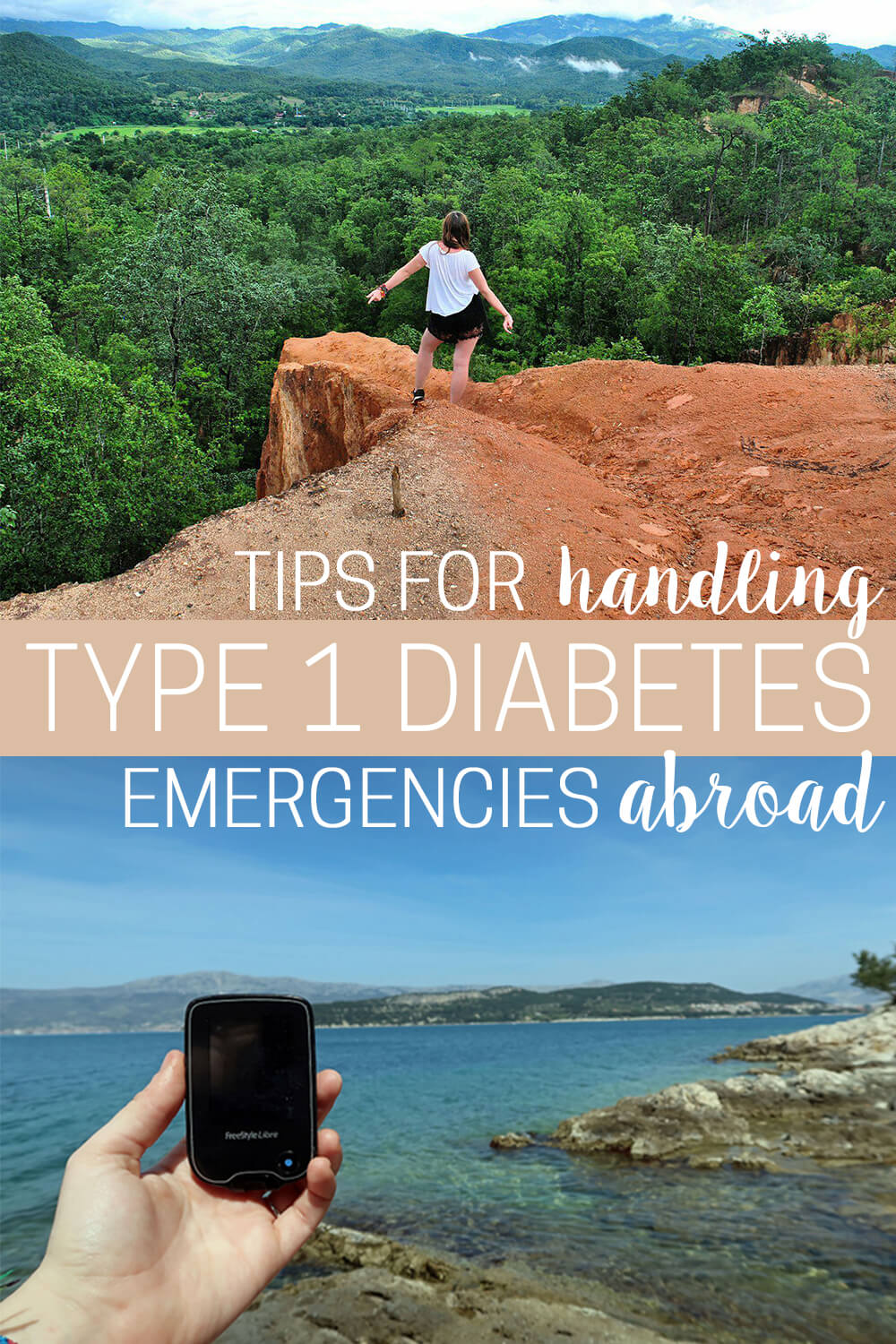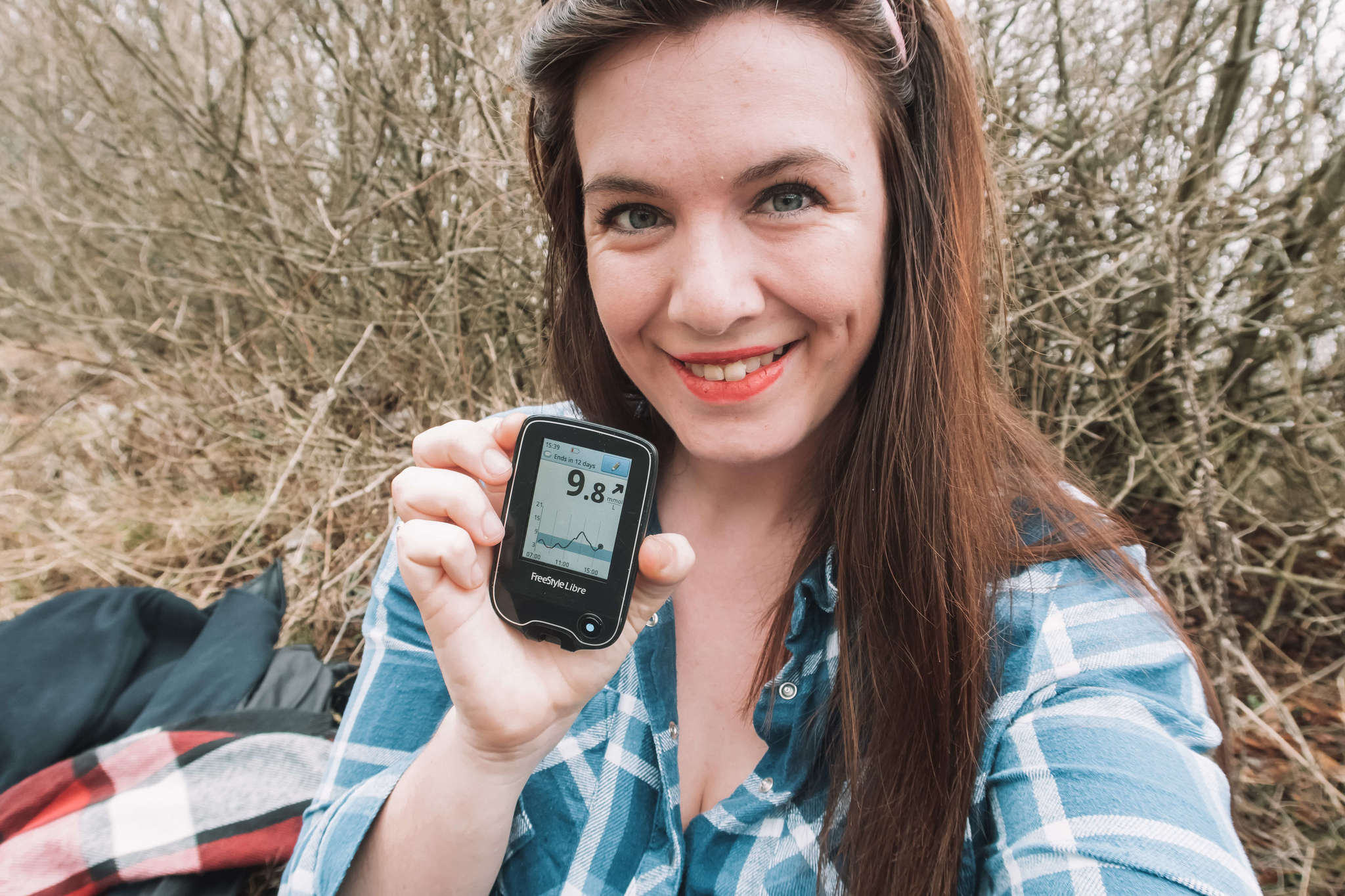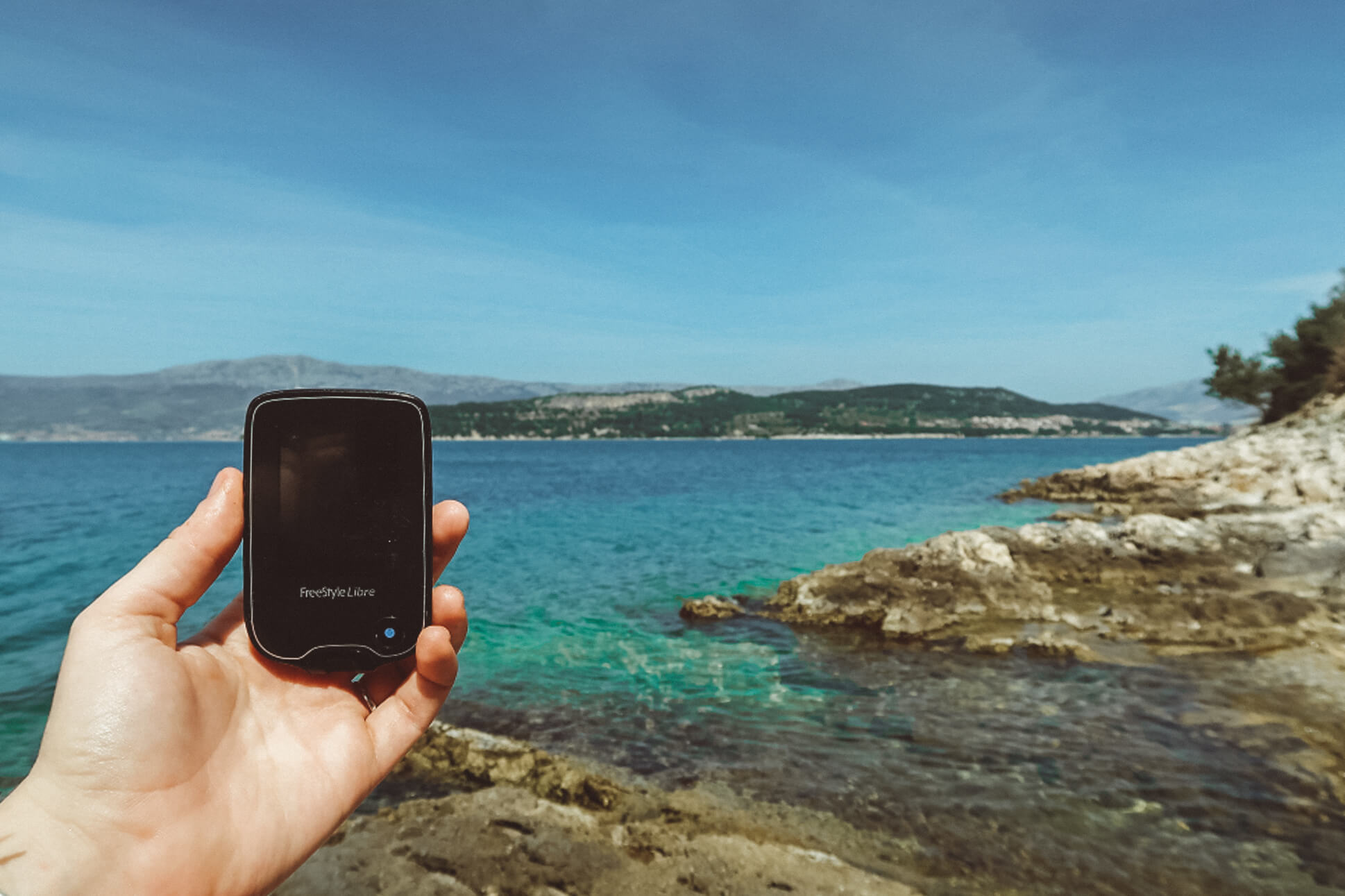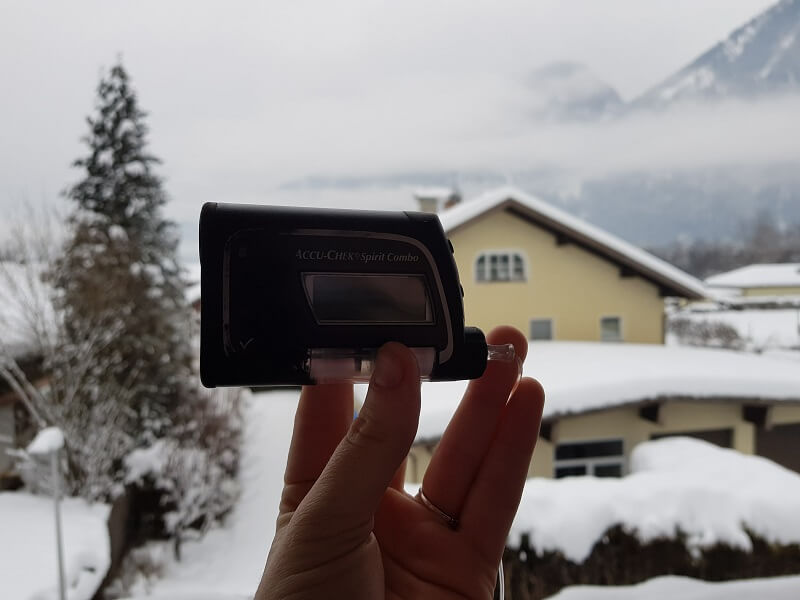
More tips for managing diabetes while traveling around the world from Cazzy Magennis, of Dream Big Travel Far!
One of the most important things about traveling with diabetes is planning. Planning is crucial to be able to enjoy a trip with type 1 diabetes, without too much stress.
No matter how prepared you are, there can still be unforeseen issues. When I was at the Full Moon Party in Thailand, someone stole my diabetic blood sugar monitor from the bar, because I assume they thought it was a phone (jokes on them!) But, since I had already planned for that “emergency”, I didn’t freak out.
So, to help with your preparation, I put together some of the most common scenarios that could go wrong, and how to deal with them. Here are my tips for handling Type 1 Diabetes Emergencies Abroad!

What to Do if You Get Sick
This is probably the most common thing that could go wrong, simply because your body is adjusting to a new places and new foods. Diabetic or not, foreign foods can mess with our stomachs!
When those with type 1 diabetes are ill, we are at an increased risk of high blood sugars. This is because your body is working overtime to try and fight off your infection.
Running high can put you at risk of DKA if you are not careful, and no one wants to fall into DKA whilst on holiday! However, the good news is there are some things you can put in place to try and help.
Firstly, you need to know your “sick day rules”. If you don’t know them, or you’ve simply forgotten, then I’ve noted them below.
- Never stop taking your insulin.
- Drink sugar free fluids, water is always the optimal choice as it helps flush your body. You should aim to take 100-200 mls of water each hour to help prevent dehydration. If you feel too sick to do this, then try and take regular sips instead.
- Test your blood sugars more frequently. If you are on a FreeStyle Libre or CGM, still take your blood sugar via a finger prick, just for accuracy.
- Always test for ketones (so don’t forget ketone sticks!) If you have ketones it’s a sign you need more insulin to prevent DKA. Someone people find they need double the amount of insulin, or more when they are running high with ketones. Personally I need triple!
- Ensure your ketone sticks are in date and test every 2 hours for ketones
Know when to get help! If your bloods are rising and your ketones are rising, then you will need medical help.
Don’t put yourself at risk. You can bring Google Translate with you to explain the situation, or pay for an English doctor.
It’s always a good idea to have “the worst scenario” explained in a translated letter that you could hand to a doctor in an emergency. It’s important to know, that most cases of DKA can be prevented if you take extra care and follow the sick day rules.
Ketones don’t mean you are going straight to hospital, so don’t panic!


What to Do if Your Diabetes Supplies Are Stolen
I can feel the panic rising in you as you read this….but don’t worry! I have a solution for this too, since it’s happened to me.
Firstly always split your supplies. Whether you are traveling solo or with friends.
If you are solo, split between your backpack, and day bag, or hand luggage and suitcase. If you are with friends or a partner, then ask them to take some of your supplies too.
This means that if your luggage is stolen, or misplaced (we know what airlines can be like!), then you’ll always have supplies. Always bring twice as much supplies as you need.
Lots of pump companies will “lend” you supplies ahead of time, so that you can bring extra with you. Give them a call!
If, for some reason absolutely everything is taken from you, then it’s time to source some new supplies. If you are on an insulin pump, the best thing to do is ring your supplier and explain the situation.
Ask if any extra supplies can be shipped out to your nearest location (you can send boxes for a post office to hold them). If you have supplies at home ask a family member to ship them out!
This may mean you need to wait in an area for a few extra days, but will save you lots of hassle. Your third option is to post on local diabetic groups of that country, or contact local diabetic charities and ask if they have any spares or were you could source some supplies.

What to Do if Your Insulin Dies
Insulin can die due to extreme temperatures, such as too much heat, or it’s too cold. You will know its died because it will turn cloudy and white- do not use it. You can prevent your insulin from dying by using insulin travel cases.
On my travels my insulin has died a couple of times, one of the most significant was when I was on a city break in Rome. It was super warm and I had my insulin pump in my bra.
I didn’t even consider that my insulin might die, so I didn’t bring any extra insulin with me on my day exploring the city. I ended up getting really sick, really fast.
This resulted in ketones and me lying in a hotel room waiting to get better so I could continue my Rome adventures. It took ages to feel better, and if I had brought insulin out with me in a Frio bag, I could have changed it and prevented the ketones- so learn from my mistake!
When you need insulin, it’s a case of heading to different pharmacies and finding out if they stock insulin, or if you need to get a prescription. Sometimes you may only be able to get pre-filled insulin pens, instead of vials and vice versa, but you can work with what you’ve got.
Please remember that different insulins around the world can have different strengths. So double check your normal strength before you take the same units of a different insulin.
For example, a U-100 insulin requires a U-100 syringes, so if you use this strength in a U-40 or U-80 syrine, you will take too much insulin and increase your risk of hypos.

What to Do if Your Insulin Pump Breaks
Insulin pumps are just technology, and unfortunately, they’re not always reliable. The good news is that most insulin pump companies will allow you to take a “holiday pump” with you on your travels for emergencies.
I know for sure that Medtronic allow this in the USA, so get in touch with your provider for more information. If you can’t bring an extra insulin pump, then you will need to switch to insulin pens.
Don’t worry, I previously wrote a full guide on switching from insulin pumps to pens to help make things easier!
I hope that after reading this you find that you are ready for any situation that might come your way when traveling with type 1 diabetes!
As always, please note, I am not a medical professional and any advice I provide is based on personal experience.
Read Next: Travel Checklist for Type 1 Diabetes
The post Tips for Handling Type 1 Diabetes Emergencies Abroad appeared first on The Blonde Abroad.
from The Blonde Abroad https://ift.tt/2khMx7n

No comments:
Post a Comment